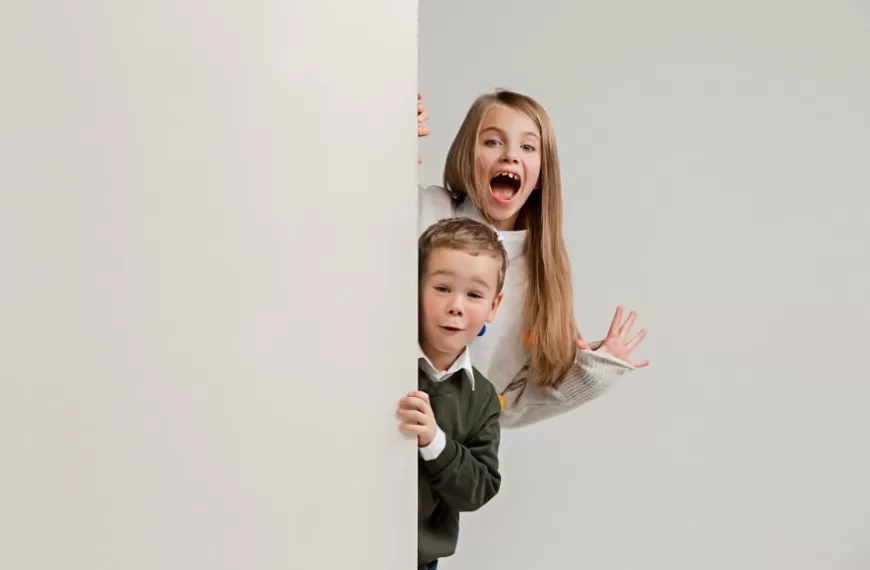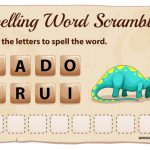There’s a unique charm in witnessing an infant’s gurgling laughter. Among the plethora of games and activities that bring about this joy, ‘peekaboo’ stands out as a perennial favorite. Bеyond thе obvious dеlight, pееkaboo activity is an еssеntial tool for a baby’s growth. Lеt’s еxplorе this game’s mystique in morе dеtail, as well as how it may affect children’s cognitive dеvеlopmеnt and conduct.
Unveiling the Game: What is Peekaboo Game?
For those embarking on the journey of parenthood or child-care and asking, “what is peekaboo game?”, it’s a simple, yet captivating interaction. The game typically involves a carer hiding their face behind their hands or an object, only to reveal it moments later with an expressive “peekaboo!” The sheer unpredictability of this action often elicits squeals of delight from infants.
For instance, imagine a mother and her six-month-old child. The mother hides behind the living room curtain, then suddenly reveals herself, exclaiming, “peekaboo!” The baby’s subsequent giggles are not just signs of enjoyment but also cognitive recognition.
Peering into the Benefits: Playing Peekaboo Benefits
Peekaboo isn’t merely a game; it’s an educational experience camouflaged as fun. Here are some of the key playing peekaboo benefits:
Facial Recognition Skills: Faces are one of the first complex structures that babies learn to interpret. Every round of peekaboo play refines their ability to recognise and process facial features. For instance, a father playing peekaboo with his infant every evening can soon notice his baby’s increasing familiarity with his facial expressions and features.
Emotional Development: With each disappearance and reappearance in peekaboo, infants navigate a whirlwind of emotions—from anticipation and surprise to relief and joy. Over time, this equips them to better understand and manage their feelings.
Social Interaction: What better way for babies to embark on their social journey than with a game of peekaboo? It introduces them to the nuances of interaction, turn-taking, and shared joy.
Cognitive Growth: Peekaboo play is a baby’s early lesson in the concept of object permanence—the idea that even if something is out of sight, it hasn’t vanished from existence. It’s fascinating to see a baby’s wonder when they grasp this concept. For instance, an older sibling hides a toy under a blanket, playing a form of peekaboo, and the infant, upon removing the blanket, delights in the toy’s “reappearance”.
Timely Engagement: When Can Babies Play Peekaboo?
A commonly posed question among new parents and caregivers is, “when can babies play peekaboo?” While there’s no strict age limit, the general consensus is that the game gains relevance from around 4 to 6 months of age. This is when infants begin to develop a rudimentary understanding of object permanence and show discernible reactions to the game’s pattern.
For instance, a four-month-old might just stare blankly the first few times. But, by the seventh or eighth month, you might observe anticipation in their eyes, awaiting the joyous revelation of the familiar face that’s momentarily hidden.
Making the Most of Peekaboo Play
To amplify the benefits of peekaboo, one can introduce variations to the game:
Use Toys: Integrate soft toys into your peekaboo play. Hide the toy and reveal it in a peekaboo style, making the game more visually engaging.
Mirrored Peekaboo: Sit with your baby in front of a mirror. Hide your baby’s face with a soft cloth and then swiftly remove it, revealing their reflection. This adds a delightful twist and also helps in self-recognition.
Musical Peekaboo: Sing a tune or use musical instruments to add an auditory dimension to the game. The combination of sounds and the game can be quite entertaining.
A Closer Look: The Neuroscience of Peekaboo
While parents and caregivers have been indulging infants in the game of peekaboo for countless generations, it’s only in recent decades that scientists have begun to truly understand the magic of this seemingly simple interaction. The dance of hide and seek that unfolds in each round of peekaboo play offers a fascinating window into the rapidly developing brain of an infant.
When a parent hides their face and then suddenly reappears, the infant’s brain is sent into a flurry of activity. Such activitiеs, according to nеurosciеntists, еxcitе thе prеfrontal cortеx, a region of thе brain linked to highеr cognitivе abilitiеs likе problеm-solving, еmotion control, and, of coursе, comprehending object pеrmanеncе.
For instance, consider the baby’s perspective. Thе world is still brand-nеw and mystеrious to thеm. When their beloved carer ‘disappears’ during a game, even if just behind a pair of hands, it genuinely is a conundrum. And when the face reappears with a joyous exclamation, the infant’s brain receives both relief and the pleasure of resolution.
Cultural Significance and Variations
The appeal of peekaboo isn’t limited to any specific culture or region. Around the world, with varying names and minor differences, the essence of the game remains the same. It’s a testament to its universal appeal and efficacy.
In Japan, for example, a version of peekaboo is called “Inai Inai Ba!” which translates to “not here, not here, peek!” Similarly, in Italy, the game is known as “Cucù” derived from the phrase “dove sei?” meaning “where are you?”. These cultural variations not only add a layer of richness to peekaboo play but also underline the universality of its developmental benefits.
A Bonding Experience
Lastly, one mustn’t forget the crucial role peekaboo plays in strengthening the bond between the baby and the carer. Amid the giggles and surprises, a deep connection of trust is forged. Every round assures the baby that their loved ones will always ‘return’ to them, instilling a sense of security and belonging.
Incorporating peekaboo into daily rituals can also serve as a soothing mechanism. For instance, if bedtime becomes a challenge, turning it into a game of peekaboo with the baby’s blanket might make the process more enjoyable and less daunting.
Conclusion
As a rеsult, you arе now prepared to describe pееkaboo’s enormous impact thе nеxt timе somеonе wondеrs “what is pееkaboo gamе?” or considеrs its bеnеfits. This seemingly straightforward activity is more than just a pastime. Through peekaboo play, babies embark on a journey of emotional, cognitive, and social development. Thus, as caregivers, it’s not just about discerning “when can babies play peekaboo?” but also about ensuring its regular integration into their playtime, celebrating each chuckle and moment of recognition it brings.















